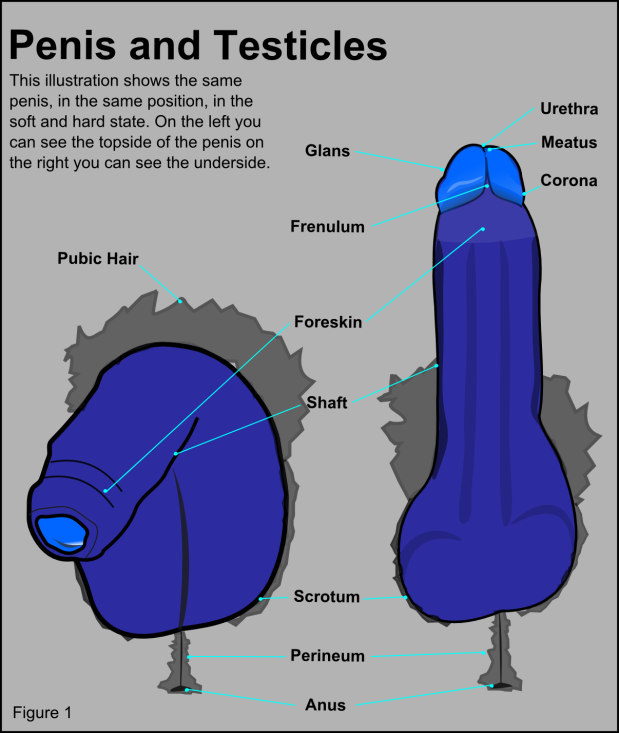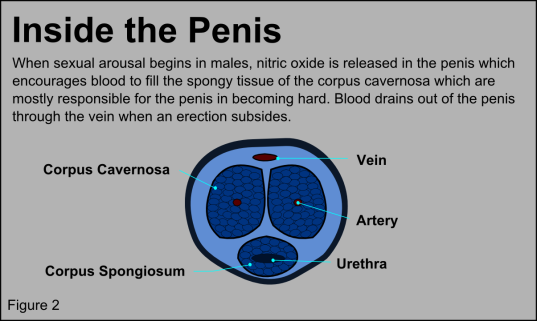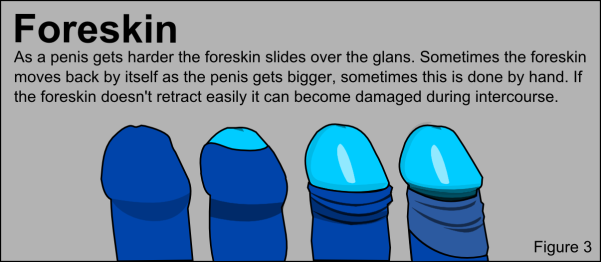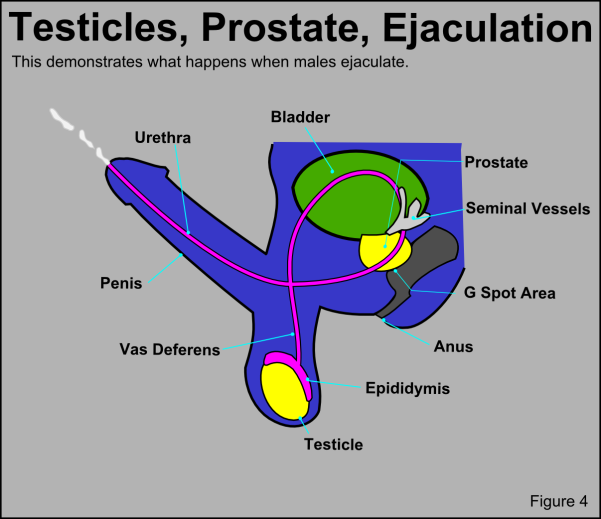Sense about penises, erections, foreskin, testicles and ejaculations
Penis
Penises have two main functions: peeing and sex. In order to fulfil these functions penises are soft or hard (or somewhere in between). There is a great variety in shapes, angle, colours, skin and sensitive spots but here are some of the basics ….
Glans
For many this is the most sensitive part of the penis. It is packed with nerve endings (around 4000 at the last count). Some people like to touch it directly others only like it being touched through the foreskin. It’s similar to the outside part of the clitoris – which is also called the glans.
Some people find the underside of the glans is more sensitive, others find the upper side is the bit that does it for them or the corona (the widest part). Others find that the meatus around the urethral opening is their favourite bit.
Penises often have tiny spots (known as papules) on the underside of the penis or under the corona. These are normal. But if you notice anything unusual then get it checked out, to make sure.
Frenulum
This thin piece of skin attaches the foreskin to the glans and is on the underside of the penis. Some people find this is a very sensitive part of the penis. This can be damaged with rough handling. It it gets torn during sex it can lead to a scary amount of bleeding. However it isn’t too serious and heals up after a couple of weeks (get it checked out to make sure though).
Penis Size
Lots of men compare their penises with other men and they are very into the idea that bigger is better both in terms of them as sexual beings but also as a man. However most men are comparing soft penises. Penis size varies a lot more when soft. Penises are either ‘growers’ or ‘showers’ – growers are penises which appear small but grow a lot when they get hard – showers are penises which appear large when soft but don’t get much bigger when hard. So some guys appear huge but when hard they are about the same as everyone else.
The average penis size is between 5.1 and 5.8 inches when erect (average circumference is 3.5 – 3.9 inches). The latest reputable penis size study by Debbie Herbenick suggests that the average length of erect penises is 5.6 inches (with a broad range of penis size between 1.5 and 10 inches) so some are going to have a bigger one and some smaller.
Whilst some people would like to have a bigger penis, it’s much more likely that it is the owner of the penis that wants it to be bigger rather than their partner. (One study reported that 85% of women were happy with their partner’s penis size, whilst only 55% of men were happy with theirs – see this piece by Cory Silverberg).
Some people might prefer having sex with someone with a larger penis (actually lots of people also prefer having sex with someone who is smaller than average) but there’s no evidence that people with bigger than average penises are better at sex. In fact there’s no evidence that people with penises at all are better at sex.
Erections
There are no bones or muscles in the penis – hard ons are caused by areas of the penis filling up with blood which is trapped for the duration of the erection. This is how it works for all you erection geeks reading.
When sexual arousal begins for males, nitric oxide is released in the penis which encourages blood to flow through the arteries into the corpus cavernosa. Blood fills up the densely packed tissue which is not allowed to leave through the dorsal vein, thus the blood is trapped and the penis starts to get hard (the corpus spongiousum acts in a similar way but remains flexible because it contains the urethra, though which semen ejaculates). An erection subsides when the dorsal veins allow the blood to drain from the corpus cavernosa allowing the male to pee, or get up from their desk without embarrassment.
There is no bone in the penis but it is possible for it to get fractured. These blood vessels can become damaged from rough sexual contact – particularly if the penis slips out and is pushed into someone’s pubic bone or leg instead of the vagina or anus.
People can have sex with a resting penis but for entry sex with a penis it needs to be reasonably hard. There are varying degrees of hardness with erections – some people find that they can enter their partner if their penis is not fully hard and then once inside the stimulation on the penis allows for the penis to get that bit harder. Although it’s possible to have entry sex with a not quite fully hard penis, this is more difficult if using condoms. So it’s worth practising using condoms with a penis to learn some tricks and tips around getting hard and having sex with them.
Erection Randomness
It might sound quite efficient to have a dual purpose organ for peeing and sex but it has it’s disadvantages. In order to pee the penis has to be ‘resting’ – urine is blocked from exiting the penis when the penis is hard. Sometimes a hard on can prevent males from peeing when they really really need to, for instance when they have an erection in the morning when they also happen to have a full bladder.
Morning wood often happens at the same time as someone needing to pee but this is just a coincidence. It’s thought that morning hard ons are just the last in a series of night-time erections. Levels of hormone which are necessary for hard ons are higher in the morning too which is thought to contribute to morning glory. Mornings aren’t the only time that males have unwanted erections.
Erections can happen at any time, any place, any where. They can be seemingly random and often have nothing to do with feeling sexually aroused. They often happen when sitting down – on the bus, in the office, in a library (not usually sexy places) where the slightest stimulation of the glans can start a stiffy, coupled with the restriction of the blood vessels from sitting which have the effect of trapping blood in the penis.
Just as sometimes males get erections when they don’t want them, they can also not get them when they really do want them. This is called irony. Someone can really really want to have sex, be very excited and very turned on but can find it hard to get hard. Erection problems can happen for medical reasons, so if getting erections is difficult a lot of the time (including when having solo sex) might be worth getting a check up from the GP to rule out cardiovascular problems or diabetes or stress.
Often it’s a temporary problem that is often caused by not being relaxed. This can be because of stress generally, worries about how much the other person might enjoy it, anxiety about being seen naked, how they feel about the other person etc. Any kind of tension or anxiety can make an erection go away – often people get into a vicious circle of becoming so anxious about erections that they don’t get them.
Taking the pressure off the role of the erect penis is likely to help with erections, but more importantly it’s good to do this anyway. The messages we receive about sex might lead us to believe that penis sex is the only ‘real’ sex and that the only way that a man can enjoy and give pleasure is through his erection. This is something we can believe in if we want to, but I think it’s a made up script that isn’t very helpful.
We can feel sexual and sensual pleasure throughout our bodies and in our brains. Remember also that not everyone gets off on penis in vagina or anus sex – 70% of women can’t orgasm from just vaginal sex. It isn’t the be all and end all for lots of males either – many find that entry sex doesn’t give them the stimulation they need and prefer other kinds of touch, masturbation for instance.
Foreskin
Foreskin should slide over the glans (bell-end) pretty easily when the penis is both hard and soft. It consists of two layers: the outer layer protects and the inner layer lubricates the glans. This helps to keep the glans sensitive and aids sexual pleasure. Foreskin owners should clean under it regularly to stop smegma building up.
The loosening of foreskin during puberty is a gradual process as the penis grows and through masturbation during teen years – so yes, masturbation is good for your health. If it is tight you could try some gentle self-stretching exercises.
Try stretching the foreskin forward and then backwards as far as it will go, hold it for a few seconds and then let go and repeat. It might help to do this in the bath or shower as the warm water will help to stretch the skin. Little by little over a few weeks the opening (prepuce) will get bigger and so the foreskin should slide over the glans more easily. Don’t force it and don’t do anything that is painful. Be careful that it doesn’t get stuck behind the glans (try and move it back straight away or go to a doctor). If in any doubt see your doctor, who may prescribe a cream to loosen it or recommend circumcision: removal of the foreskin.
Many people have their foreskin removed for health reasons but also for cultural or religious reasons. Lots of men are now objecting to the removal of foreskin as some report a loss of sexual sensation. It’s difficult to measure whether circumcision has an effect on the sensitivity of the penis (as there aren’t enough males who have had sexual experience with a functioning foreskin who then have a circumcision), but circumcised males can certainly have very enjoyable sex.
http://beaugeblog.blogspot.co.uk/ for a fascinating blog by a teen on a successful quest to loosen foreskin
A proposed treatment for tight foreskin
A study on the link between not masturbating and tight foreskin.
Ejaculation
Ejaculation is not necessarily the same as orgasm, as some people are able to experience orgasm before they ejaculate (and thus are able to experience more than one orgasm in a row – more about that another time), but ejaculation and orgasm often occur at the same time and can be very very pleasurable. Here we’ll look at what happens before, during and after ejaculation from a biological perspective.
Millions of sperm are created in the testicles each day (which is also responsible for the production of male hormones such as testosterone). When created they are stored in the epididymis. Before ejaculation the sperm (between 50 and 150 million per ejaculation) moves from here along the vas deferens (these are the sperm tubes which are snipped when someone has a vasectomy). The sperm is mixed with semen from the seminal fluids before sitting in the prostate glad before ejaculation.
The reproductive role of semen is to protect the sperm from the acidic conditions of the vagina, to aid motility and to feed the sperm with vital nutrients. Semen varies in consistency from male to male and from ejaculation to ejaculation. Sometimes it’s watery, sometimes milky and sometimes sticky.
Before ejaculation begins a fluid from the Cowper’s Gland at the base of the penis travels along the urethra making sure that the path is clear for a speedy ejaculation (this pre-ejaculatory fluid can sometimes be seen at the tip of the penis before ejaculation).
Orgasm for males (as with everyone else) involves contractions of muscles in the pelvis (each one lasting 0.8 seconds to be exact). Muscles surrounding the prostate pump the mix of sperm and semen out of the prostate and along the urethra at high speed (upto 40 kph).
After ejaculation the erection usually subsides and it’s not usually possible to repeat the process for a few minutes or hours. This is known as the refractory period.
Testicles
Testicles have a dual function of creating sperm and hormones such as testosterone. They produce millions of sperm a day. It’s normal for one to hang lower than the other (it’s thought this prevents them clanging into each other). It’s fine for one to be bigger than the other – they are usually between the size of an egg yolk and a plum. It’s thought that they hang outside of the body because sperm needs to be kept below body temperature in order to be effective. Before ejaculation a lot of people find that the scrotum tightens up.
The job of the scrotum is to protect the testicles and to act as a temperature control unit. If a they feel cold the scrotum tightens, bringing the balls closer to the body for warmth. If feeling warm the scrotum relaxes which takes the balls further away from the body (this is why it’s good to do testicular self-examination after a warm bath or shower). For this reason if trying to conceive it’s a good idea to avoid wearing very tight pants and regular hot baths or jacuzzis.
The epididymis is the lumpy bit at the back of each testicle where sperm is stored once it’s been made. It’s from here that sperm travels along the vas deferens at the beginning of it’s ejaculatory journey.
G Spot
Many males enjoy the upper wall of their anus to be stimulated. The anus is rich in nerve endings so is very sensitive anyway, but the upper wall of the anus presses against the prostate gland which has a crucial role to play in male ejaculation and orgasm. Like the female ‘G spot’ (which may well have a link to the female prostate) some people enjoy stimulation of this area and some don’t. Some people may find that this area isn’t as sensitive for them as other people – different strokes for different folks.
For further reading
Guide to Getting It On – Paul Joannides
How Sex Works – Dr Sharon Moalem
Sex Made Easy – Dr Debbie Herbenick
bishUK.com Sex Ed for over 14s
© Justin Hancock, 2013



